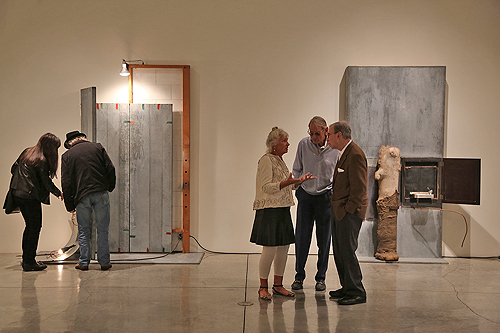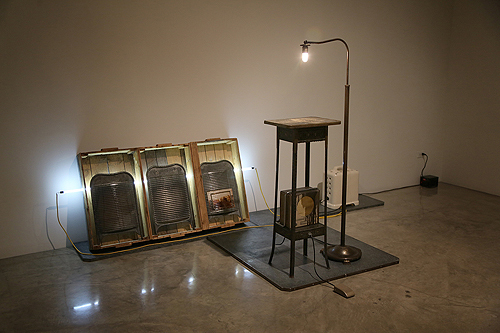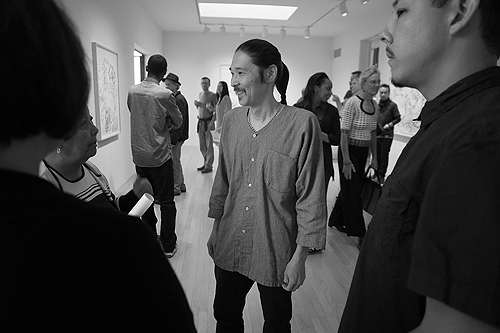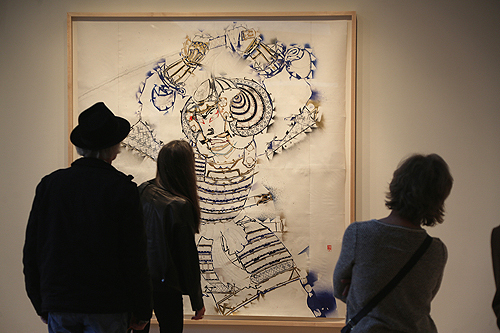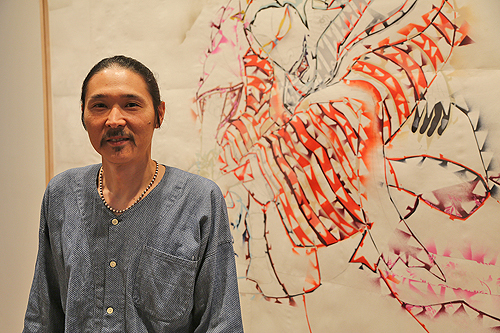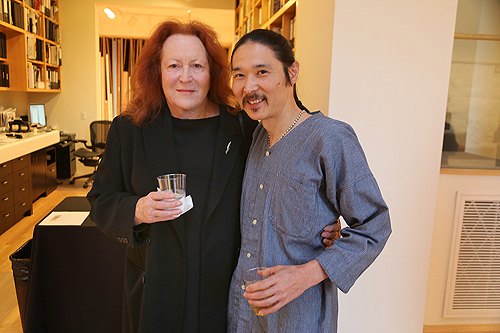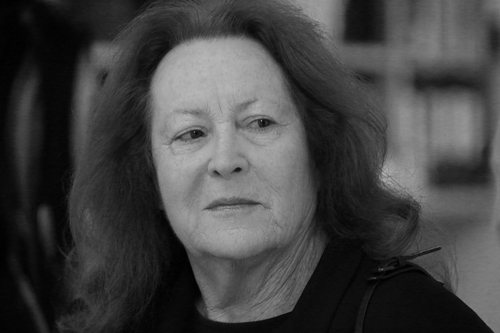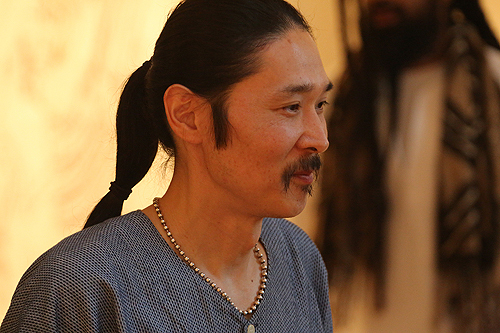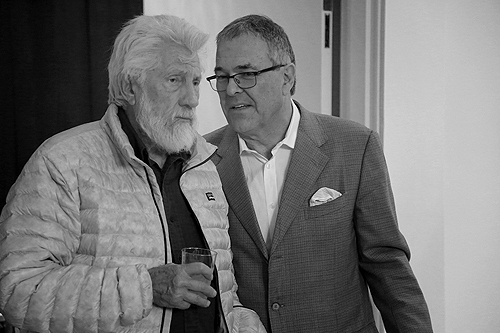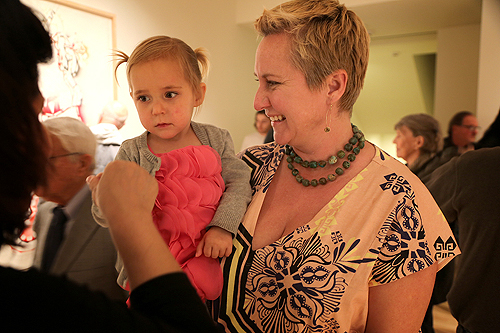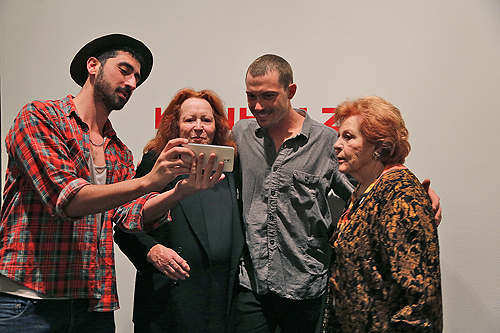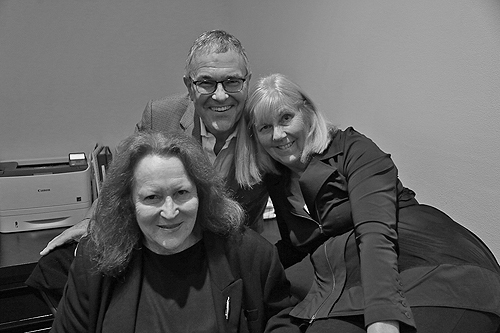Natalie Dessay's debut recital at San Francisco's Davies Symphony Hall this past Saturday night was delightful, delirious and de-lovely. Since early last June when she told me of her decision to retire from the operatic stage in order to pursue her ambitions as an actress, I and so many of Natalie's fans despaired of ever seeing her perform any classical repertoire again. But since the beginning of March, she has been on a recital tour with the brilliant pianist Philippe Cassard in a program that has so far been presented in Montreal, Quebec, Boston and last week at Carnegie Hall. The tour continues in April with performances in Tokyo and Seoul, then in May, she and Cassard return to France to perform in Évian-les-bains, Paris, and Biot. Her recital program is a discerning blend of lieder from Clara Schumann, Brahms and Richard Strauss along with mélodies of Debussy, Duparc, Fauré and Poulenc. We think this is the beginning of a beautiful friendship.
Natalie made a dazzling entrance in a sparkling grey and silver ball gown -- bare shouldered, sleeveless -- her daily commitment to yoga revealing strength and appealing definition. For those who remember and yearn for more such unplugged classical recitals with solo singer and pianist -- the vision was bewitching and splendid. Her program began with a group of four songs by Clara Schumann. The text of the first selection, "Liebst du um Schönheit" ("If You Love for Beauty"), pleads to a would-be lover that if the passion is about beauty, youth or treasure, then, "don't love me." But if that eagerness is for the sake of love, then, yes -- "I will love you forever."
The link between artist and audience was charged with mutual appreciation. Suddenly, the (assumed/prescribed) concert protocol to withhold any clapping until she had completed the Schumann set seemed rather difficult. But by the final stanza of the second song, "Geheimes Flüstern" ("Soft, Secret Whispers"), it was time to let go of the etiquette and let fly the applause. Natalie took advantage of the situation by indulging in a coughing break and invited everyone to join in a collective hack. It was a moment of classic comic relief. The city's latest patterns of crazy weather have kicked the allergy season into high, sparing no one -- not even its world renowned guest artists. Calm returned, and Natalie was back in voice.
![2014-03-17-NATALIEDESSAY.PhotoSimonFowler.jpg]()
NATALIE DESSAY. Photo, Simon Fowler
Natalie Dessay's musicianship is sublime. It is her commitment to the text -- and thus, to the heart and soul of the character she communicates -- that stimulates and mobilizes her vocal delivery. As seen in the 2013 PBS broadcast of her performance at the Met as Cleopatra in Handel's Giulio Cesare and the recent DVD of La Traviata produced at Aix-en-Provence, Natalie's engagement with the composer and librettist is absolute. Her recent recording with composer/pianist Michel Legrand, "Entre Elle Et Lui" and their current concert schedule, reflects the luxuries of her 2012 CD, Clair de Lune -- a celebration of Debussy's 150th birthday.
Natalie's impeccable artistry shone throughout the evening, particularly in her outstanding renditions of Duparc's "L'Invitation au Voyage" and "Extase." But with her rapturous interpretations of Strauss' "Ich schwebe" ("I Float") and "Wasserrose" ("Water Lily"), the entire hall resounded her glistening upper register and idyllic, full-spirited delivery.
The incredible sensitivity and enduring support imparted by Philippe Cassard is a magical dream come true for any singer. Attentive to Natalie's every mood and inclination, colorings and shadows -- Cassard's dynamic accompaniment was at all times insightful and packed with love. As a team, their dual efforts blossomed in Poulenc's "Violon" and Debussy's "Apparition" -- a profound blending of poetry and music that was exceedingly gorgeous, transcendent and unforgettable.
Natalie made a dazzling entrance in a sparkling grey and silver ball gown -- bare shouldered, sleeveless -- her daily commitment to yoga revealing strength and appealing definition. For those who remember and yearn for more such unplugged classical recitals with solo singer and pianist -- the vision was bewitching and splendid. Her program began with a group of four songs by Clara Schumann. The text of the first selection, "Liebst du um Schönheit" ("If You Love for Beauty"), pleads to a would-be lover that if the passion is about beauty, youth or treasure, then, "don't love me." But if that eagerness is for the sake of love, then, yes -- "I will love you forever."
The link between artist and audience was charged with mutual appreciation. Suddenly, the (assumed/prescribed) concert protocol to withhold any clapping until she had completed the Schumann set seemed rather difficult. But by the final stanza of the second song, "Geheimes Flüstern" ("Soft, Secret Whispers"), it was time to let go of the etiquette and let fly the applause. Natalie took advantage of the situation by indulging in a coughing break and invited everyone to join in a collective hack. It was a moment of classic comic relief. The city's latest patterns of crazy weather have kicked the allergy season into high, sparing no one -- not even its world renowned guest artists. Calm returned, and Natalie was back in voice.
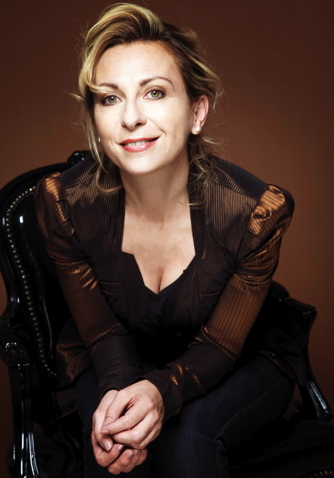
Natalie Dessay's musicianship is sublime. It is her commitment to the text -- and thus, to the heart and soul of the character she communicates -- that stimulates and mobilizes her vocal delivery. As seen in the 2013 PBS broadcast of her performance at the Met as Cleopatra in Handel's Giulio Cesare and the recent DVD of La Traviata produced at Aix-en-Provence, Natalie's engagement with the composer and librettist is absolute. Her recent recording with composer/pianist Michel Legrand, "Entre Elle Et Lui" and their current concert schedule, reflects the luxuries of her 2012 CD, Clair de Lune -- a celebration of Debussy's 150th birthday.
Natalie's impeccable artistry shone throughout the evening, particularly in her outstanding renditions of Duparc's "L'Invitation au Voyage" and "Extase." But with her rapturous interpretations of Strauss' "Ich schwebe" ("I Float") and "Wasserrose" ("Water Lily"), the entire hall resounded her glistening upper register and idyllic, full-spirited delivery.
The incredible sensitivity and enduring support imparted by Philippe Cassard is a magical dream come true for any singer. Attentive to Natalie's every mood and inclination, colorings and shadows -- Cassard's dynamic accompaniment was at all times insightful and packed with love. As a team, their dual efforts blossomed in Poulenc's "Violon" and Debussy's "Apparition" -- a profound blending of poetry and music that was exceedingly gorgeous, transcendent and unforgettable.
